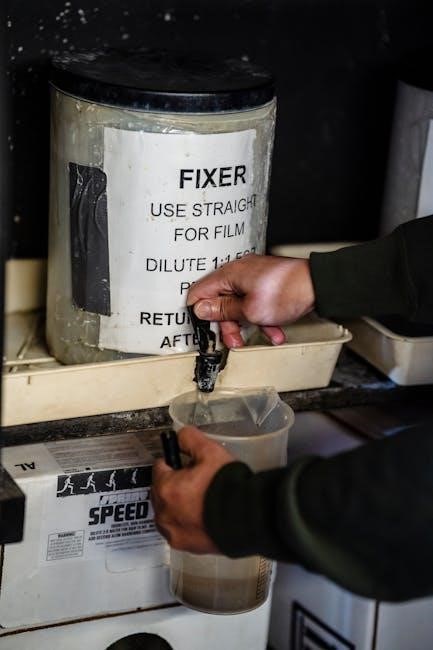Locate the transmission fluid dipstick or filler plug, typically found near the firewall or bottom of the transmission. Ensure the vehicle is parked on a level surface with the parking brake engaged. Warm up the engine and shift through all gears to circulate the fluid. Remove the filler plug and check the fluid level by inserting a finger or metal stem. The fluid should be just below the cap. Analyze the color and consistency, looking for signs of contamination or degradation. If low, top up with the recommended fluid type. Regular checks ensure optimal transmission performance.
Checking the fluid in a manual transmission is a crucial maintenance task to ensure smooth gear operation and prevent damage. Unlike automatic transmissions, manual transmissions often lack a dipstick, requiring a different approach to monitor fluid levels. The fluid plays a vital role in lubricating gears and preventing overheating. Over time, the fluid can degrade or leak, leading to potential issues. Regular checks help maintain optimal performance and extend the transmission’s lifespan. This guide provides a step-by-step approach to checking manual transmission fluid, including locating the filler plug, preparing the vehicle, and interpreting results. By following these steps, you can ensure your transmission operates efficiently and avoid costly repairs.
Importance of Transmission Fluid
Transmission fluid is essential for lubricating gears, bearings, and synchros in a manual transmission, reducing friction and preventing overheating. It also helps transfer power smoothly between gears and protects against corrosion. Over time, the fluid can degrade, losing its lubricating properties and ability to cool components. Low or dirty fluid can lead to gear grinding, slipping, or even transmission failure. Regular fluid checks ensure optimal performance, prevent premature wear, and extend the lifespan of the transmission. Using the correct type of fluid is critical, as specified by the manufacturer, to maintain the system’s integrity and functionality. Neglecting fluid maintenance can result in costly repairs, emphasizing the importance of routine inspection and proper fluid levels.
Tools and Materials Needed
To check the manual transmission fluid, gather essential tools: a 3/8-inch ratchet and socket set for removing the filler plug, a drain pan to catch any spills, and a pair of gloves for protection. Additionally, a torque wrench may be necessary to properly tighten the plug afterward. Ensure you have a bottle of the correct transmission fluid, as specified by the manufacturer, to top up if needed. A cleanliness cloth or paper towels are useful for wiping the plug and any drips. For accurate level assessment, a metal stem or screwdriver can assist in probing the fluid level within the transmission casing. Having these tools ready ensures a smooth and efficient process when inspecting and maintaining the transmission fluid.

Step-by-Step Guide
Locate the filler plug, warm up the engine, park on a level surface, engage the parking brake, and shift into neutral before proceeding with the fluid check.
Locating the Transmission Fluid Dipstick or Plug
For manual transmissions, the fluid level is typically checked via a filler plug rather than a dipstick. This plug is usually located on the bottom or side of the transmission. In rear-wheel-drive vehicles, it may be near the firewall, while in front-wheel-drive cars, it is often at the front of the engine. You may need a wrench or ratchet to remove the plug. Some vehicles have a dipstick, but it is less common. Always consult your owner’s manual for the exact location, as it varies by vehicle make and model. Ensure you have the correct tools, such as a 3/8 ratchet, to access the plug. If unsure, refer to a repair manual for specific guidance.
Preparing the Vehicle
Park the vehicle on a level surface to ensure accurate fluid level measurement. Engage the parking brake and shift the transmission into neutral gear. Allow the engine to warm up by idling for a few minutes or taking a short drive. This ensures the transmission fluid is properly circulated and heated for an accurate level reading. Gather necessary tools such as a wrench or ratchet to remove the filler plug. Put on protective gloves and eyewear for safety. Open the hood if needed and locate the filler plug, typically near the transmission. Be prepared to catch any spilled fluid with a clean container or paper towels. Ensure the vehicle remains stationary throughout the process to avoid any accidental movement.
Warming Up the Engine
Start the engine and let it idle for a few minutes to warm up the transmission fluid. This ensures the fluid circulates properly and provides an accurate level reading. If the engine is cold, the fluid may not flow freely, leading to incorrect measurements. Allow the vehicle to run until it reaches its normal operating temperature, which typically takes 5–10 minutes. Avoid revving the engine excessively during this time. Once warmed up, the fluid will be evenly distributed, allowing you to check the level accurately. This step is crucial for obtaining a reliable reading and ensuring the fluid is in optimal condition for inspection.
Parking on a Level Surface
Parking your vehicle on a level surface is essential for an accurate transmission fluid level reading. If the car is on an incline, the fluid may pool unevenly, leading to incorrect measurements. Choose a flat, even surface, such as a garage floor or driveway, to ensure the fluid level is properly assessed. Avoid sloped areas, as this can cause the fluid to tilt toward one side of the transmission pan, giving a false reading. Use a spirit level tool if necessary to confirm the surface is even. This step ensures that the fluid level check is precise and reliable, preventing overfilling or underfilling the transmission. Proper leveling is critical for maintaining optimal transmission performance and avoiding potential damage. Always double-check the surface before proceeding with the fluid inspection.
Engaging the Parking Brake
Engaging the parking brake is a critical step to ensure safety and accuracy while checking the transmission fluid. This prevents the vehicle from rolling or moving unexpectedly, which could lead to accidents or injuries. With the parking brake applied, the car remains stationary, allowing you to work under the hood or underneath the vehicle without risk. Additionally, a stationary car ensures the transmission fluid level is measured accurately, as movement could cause the fluid to shift and provide a misleading reading. Always double-check that the brake is fully engaged before proceeding with the fluid inspection. This simple step is essential for both safety and obtaining reliable results during the process. Failure to engage the brake could compromise the entire procedure and potentially lead to errors in fluid assessment.
Ensuring the vehicle is in neutral gear is essential for safely and accurately checking the transmission fluid. Neutral gear disengages the transmission from the engine, preventing any accidental movement or gear engagement. This step is crucial for maintaining control of the vehicle while working with the transmission. With the transmission in neutral, the fluid level remains stable and accurate, allowing for a proper assessment. Failure to shift into neutral could result in the car moving unexpectedly, posing a safety hazard. Always confirm the gear selector is fully in the neutral position before proceeding. This ensures a secure environment for inspecting the fluid and prevents any potential risks associated with an engaged transmission. Neutral gear is a fundamental requirement for this procedure to be effective and safe. Check the fluid’s color, consistency, and look for contaminants. Proper transmission fluid should be clear and free of debris or metal shavings, indicating good condition. To remove the filler plug, locate it at the bottom of the transmission. Use a wrench or ratchet to unscrew it. Be cautious not to strip the threads. Once removed, inspect the fluid level; The fluid should be visible just below the plug hole. Ensure the vehicle is on a level surface and the engine is warm for an accurate reading. Use a rag to protect against any fluid spillage. After inspection, securely tighten the plug to prevent leaks. This step is crucial for maintaining proper transmission function and ensuring fluid levels are correct. After removing the filler plug, inspect the fluid level by inserting your finger or a metal stem into the plug hole. The fluid should reach just below the opening. If the level is low, you’ll feel no fluid on your finger. Ensure the vehicle is on a level surface and the engine is warm for an accurate reading. Use a clean cloth to wipe away any excess fluid. If the level is insufficient, prepare to add the correct type of transmission fluid. Avoid overfilling, as this can damage the transmission. Proper fluid levels are essential for smooth gear operation and preventing internal damage. Always refer to your vehicle’s manual for specific guidelines. Transmission fluid color is a key indicator of its condition. New fluid is typically pink or red. If the fluid appears dark brown or black, it may be contaminated or degraded. Clean, healthy fluid should be translucent and free of particles. If you notice metal shavings or a milky texture, it could indicate internal wear or coolant contamination. Place a few drops on a white paper towel to better assess the color and consistency. Discoloration or an unusual odor suggests the fluid needs to be changed. Always compare the fluid’s appearance to the manufacturer’s recommendations for your specific transmission type. Regular color checks help identify potential issues before they escalate. After analyzing the color, inspect the fluid’s texture and consistency. Healthy transmission fluid should be smooth and free of grit or sludge. If the fluid feels thick, gritty, or slimy, it may indicate contamination or wear. Check for water or coolant contamination, which can cause a milky appearance. If the fluid is frothy or has air bubbles, it could signal overfilling or a leak. A burnt smell or dark, sooty texture suggests overheating or clutch pack wear. Any metal shavings or debris in the fluid indicate internal damage. If the fluid is degraded, it may not lubricate effectively, leading to premature wear. A poor fluid condition requires immediate attention, such as a fluid change or transmission service, to prevent further damage. Inspect the fluid for any visible contaminants like metal shavings, dirt, or water. Metal particles in the fluid indicate internal wear or damage. If the fluid appears milky or frothy, it may be contaminated with water or coolant, which can lead to corrosion and wear. Check for any signs of debris or sludge, as these can clog filters or damage components. If contaminants are found, drain and replace the fluid immediately. Regularly checking for contaminants helps maintain transmission health and prevents costly repairs. Always use a clean container to collect the fluid to avoid introducing new contaminants during the inspection process. Low fluid levels indicate leaks or wear. Dirty or discolored fluid suggests degradation or contamination. Color changes, like brown or black, signal internal wear or overheating. Address issues promptly. A low fluid level is evident when the transmission fluid does not reach the expected mark on the dipstick or filler plug. This can be identified during the fluid check by inserting a finger or tool into the filler plug hole; if no fluid is felt, the level is insufficient. Symptoms of low fluid include difficulty shifting gears, unusual noises, and increased engine RPM when accelerating. Prolonged driving with low fluid can lead to overheating and potential damage to internal components. Addressing the issue promptly is crucial to prevent costly repairs and ensure smooth transmission operation. Dirty transmission fluid is often identified by its color and consistency. Normally, transmission fluid is pink or red and has a smooth, translucent appearance. When it becomes dirty, it may turn brown or black, indicating contamination or degradation. The fluid may also appear murky or cloudy, suggesting the presence of particles or sludge. Additionally, a burnt smell or gritty texture can signal that the fluid has deteriorated. If the fluid feels thick or lumpy, it may be a sign of additives breaking down. Dirty fluid can lead to poor transmission performance, such as slipping gears or delayed engagement. It is crucial to address this issue promptly to prevent damage to internal components. Regular fluid checks help identify these signs early on. Transmission fluid color changes provide critical insights into its condition. New fluid is typically pink or red and translucent. Over time, it may darken to amber or brown due to normal wear and tear. However, if the fluid turns black or develops a metallic sheen, it indicates contamination or degradation. A milky appearance suggests coolant or water has mixed with the fluid, which is a serious issue requiring immediate attention. Darker colors often signal excessive heat, internal component wear, or debris buildup. Monitoring these changes helps identify potential problems early, preventing costly repairs. Always compare the fluid color to the manufacturer’s reference on the dipstick or in the service manual for accurate assessment. When adding fluid, select the correct type specified by the manufacturer. Pour slowly into the filler hole using a funnel to prevent spills. Reinstall the plug securely after reaching the recommended level. Always refer to the manual for guidance to ensure proper fluid level and avoid overfilling, which can cause damage. Check for leaks and test the transmission operation after refilling. Proper fluid addition ensures smooth gear engagement and prevents wear on internal components. Regular monitoring and timely top-ups maintain optimal transmission performance and longevity. Selecting the correct transmission fluid is crucial for optimal performance. Manual transmissions typically require gear oil, such as GL-4 or GL-5, depending on the manufacturer’s specifications. Always consult the owner’s manual or the manufacturer’s guidelines to confirm the recommended fluid type. Using the wrong fluid can lead to premature wear, damage to synchronizers, or even transmission failure. Synthetic gear oils are often preferred for their improved lubrication and temperature stability. Ensure the fluid meets the API certification standards for manual transmissions. Avoid mixing different fluid types, as this can compromise the transmission’s performance. If unsure, consult a professional mechanic or the dealership for guidance. Proper fluid selection ensures smooth gear operation and extends the lifespan of the transmission. Pouring the fluid into the transmission requires precision to avoid overfilling. Use a funnel to guide the fluid into the filler plug opening. Add the fluid slowly, checking the level frequently by inserting a finger or metal stem into the plug hole. Stop once the fluid reaches the recommended level, typically just below the filler plug opening. Overfilling can lead to leaks or damage to the transmission. Ensure the fluid flows freely without bubbles. Replace the filler plug securely once done. Wipe any spills with a clean cloth to prevent dirt from entering the transmission. Proper pouring ensures the transmission operates smoothly and maintains its longevity. Always refer to the manufacturer’s instructions for specific guidance. Once the fluid level is correct, reinstall the filler plug securely to prevent leaks. Tighten it firmly by hand or with a wrench, ensuring it is snug but not over-torqued. Double-check the plug to confirm it is properly seated and sealed. Wipe the area clean with a rag to remove any spilled fluid or debris, which could attract dirt and contaminate the transmission. If the plug shows signs of wear or damage, replace it to maintain the integrity of the transmission system. Properly reinstalling the filler plug is essential to maintain transmission performance and prevent future issues. Always ensure the plug is tightly secured before driving the vehicle. Regular fluid checks ensure smooth transmission operation. Follow manufacturer recommendations for fluid changes and monitor for leaks to prevent damage and maintain optimal performance. Regular fluid checks are essential for maintaining the health of your manual transmission. Start by parking your vehicle on a level surface and engaging the parking brake. Allow the engine to warm up by driving for a few minutes or idling to ensure the fluid circulates properly. Locate the filler plug, usually found at the bottom or side of the transmission. Remove the plug and insert a clean finger or metal tool to assess the fluid level, which should be just below the plug opening. Check the fluid’s color and consistency; clean fluid is typically pink or amber, while dark or gritty fluid indicates it needs changing. Regular checks help prevent damage and ensure smooth gear operation. If you notice low levels or degraded fluid, address the issue promptly to maintain optimal performance. Manual transmission fluid should be changed at intervals recommended by the manufacturer, typically every 30,000 to 60,000 miles, depending on usage and conditions. If the fluid appears dark, gritty, or has a burnt smell, it should be replaced immediately. Use a high-quality gear oil that meets the specifications outlined in your vehicle’s manual. During the change, drain the old fluid completely and replace the filter if applicable. Reinstall the plugs securely, ensuring they are tightened to the correct torque specification. Regular fluid changes help maintain smooth gear engagement and prevent wear on internal components. Always consult your vehicle’s manual or a certified mechanic for specific recommendations tailored to your car’s needs. This practice ensures optimal performance and prevents costly repairs down the road. Regularly inspect the transmission pan and surrounding areas for signs of leaks, such as droplets or puddles of fluid. Transmission fluid is typically pink or red, making it easily identifiable. Check the ground where the vehicle is parked for stains, which may indicate a leak. Inspect the transmission pan gasket and filler plug for moisture or rust. Use a clean rag to wipe these areas and monitor for fresh fluid. Examine the gaskets and seals for cracks or wear, as these are common sources of leaks. If a leak is detected, address it promptly by consulting a mechanic to prevent further damage. Regular maintenance, including fluid checks, helps identify potential leaks early, ensuring the transmission operates smoothly and efficiently. Early detection can prevent costly repairs and extend the lifespan of your vehicle’s transmission system. Check the transmission fluid regularly, ideally every 30,000 to 60,000 miles, or during routine maintenance like oil changes. If you notice leaks, slipping gears, or unusual noises, inspect the fluid immediately. For manual transmissions, which often lack a dipstick, remove the filler plug to gauge the level. Ensure the vehicle is on a level surface and warmed up for an accurate reading. Look for the fluid to be just below the filler plug opening. If the fluid appears dirty, dark, or has a burnt smell, consider a professional inspection or fluid change. Consistent checks help prevent transmission damage and ensure smooth gear operation. Using the correct type of transmission fluid is crucial for optimal performance and longevity. Manual transmissions typically require gear oil, such as GL-4 or GL-5, depending on the manufacturer’s specifications. Using the wrong fluid can lead to damaged gears, bearings, or seals. Always refer to your vehicle’s owner’s manual or consult with a professional to ensure compatibility. Some modern manual transmissions may require synthetic or specialized fluids for better lubrication and heat resistance. Never mix different types of fluid, as this can degrade performance and cause internal damage. The wrong fluid can also void your vehicle’s warranty or lead to costly repairs down the line, emphasizing the importance of selecting the appropriate transmission fluid for your specific vehicle. Discovering metal shavings in the transmission fluid is a serious sign of internal wear or damage. Immediately stop driving the vehicle to prevent further harm. Metal particles indicate potential issues like gear wear, bearing failure, or internal component damage. Drain the fluid and inspect the transmission thoroughly. In such cases, professional diagnosis is essential to identify the source of the problem. Ignoring metal shavings can lead to catastrophic transmission failure, requiring costly repairs or even replacement. Always address this issue promptly to avoid escalating damage and ensure the longevity of your vehicle’s transmission system. Early intervention can save time and money in the long run.Ensuring the Vehicle is in Neutral Gear

Inspecting the Transmission Fluid
Removing the Filler Plug
Checking the Fluid Level
Analyzing the Fluid Color
Assessing the Fluid Condition
Looking for Contaminants

Interpreting the Results

Signs of Low Fluid Level
Indications of Dirty Fluid
Understanding Fluid Color Changes

Adding Transmission Fluid
Selecting the Correct Fluid Type

Pouring the Fluid into the Transmission
Reinstalling the Filler Plug

Maintenance and Follow-Up
Regular Fluid Checks
Fluid Change Recommendations
Monitoring for Leaks


FAQs
How Often Should I Check the Transmission Fluid?
Can I Use Any Type of Transmission Fluid?
What If I Find Metal Shavings in the Fluid?
